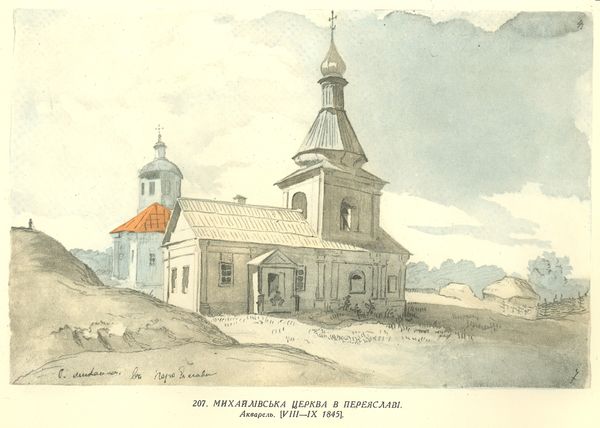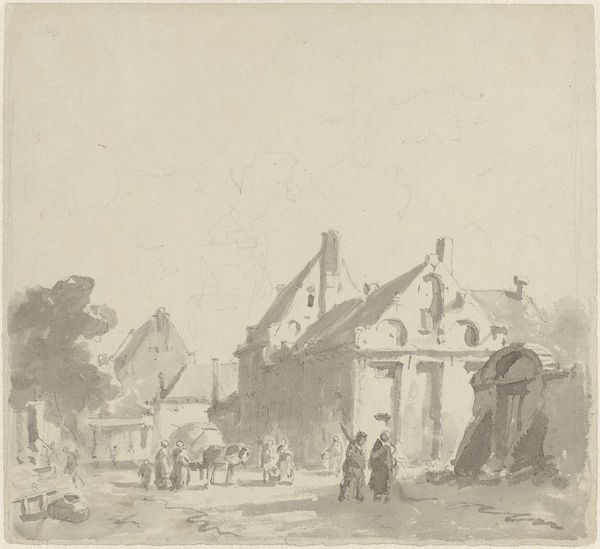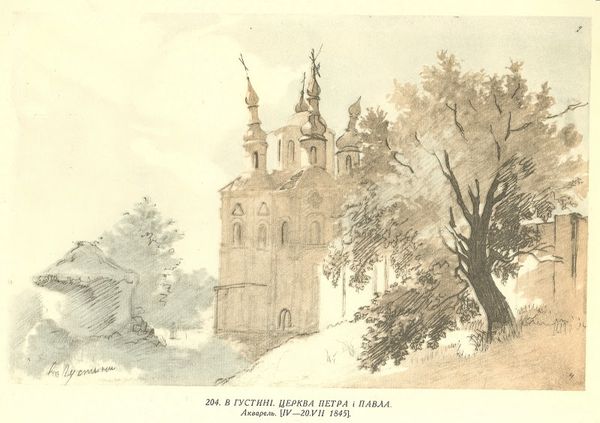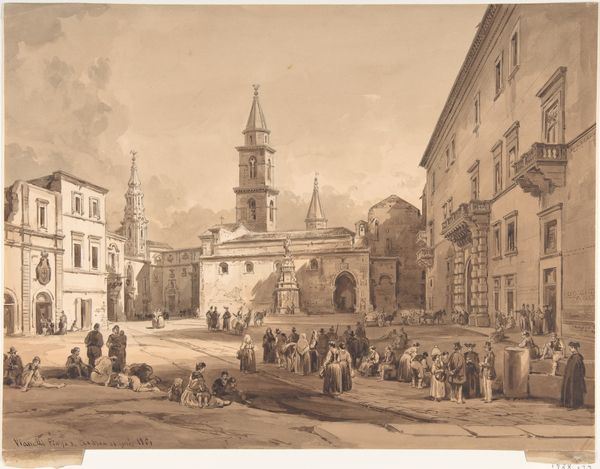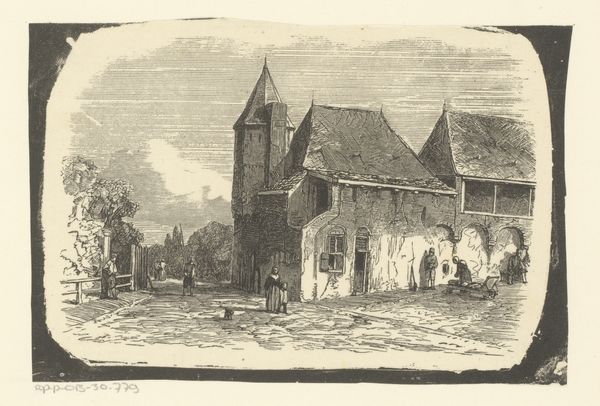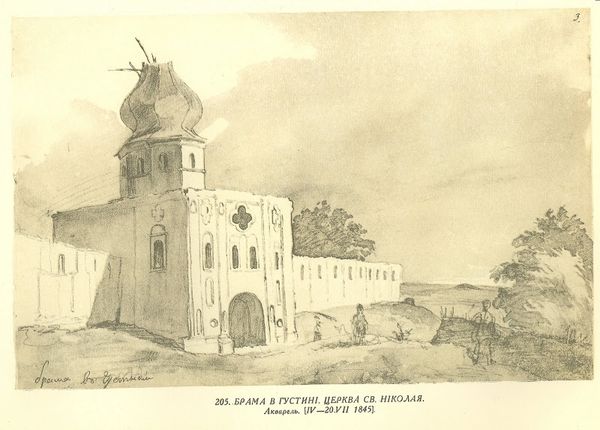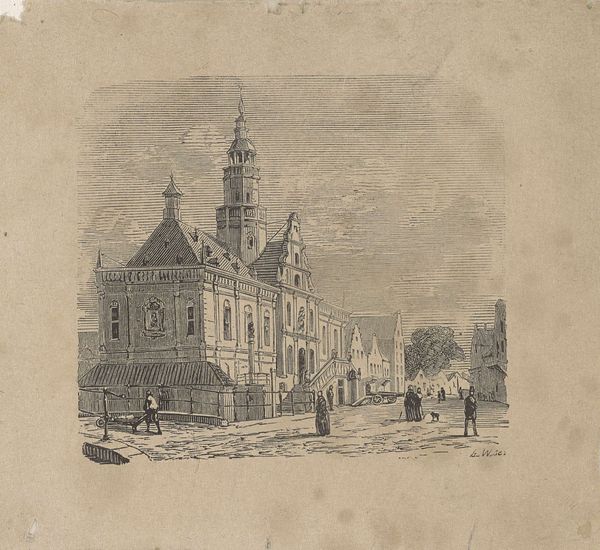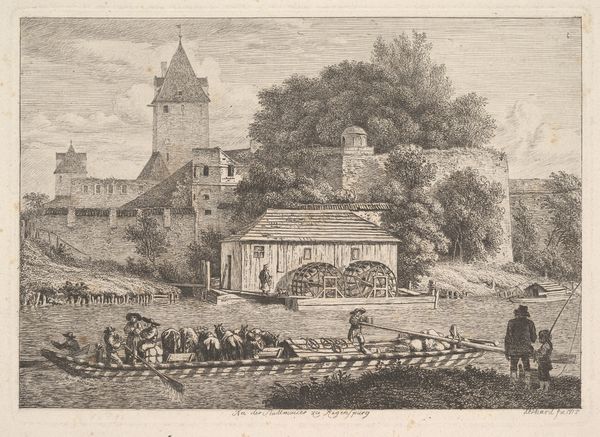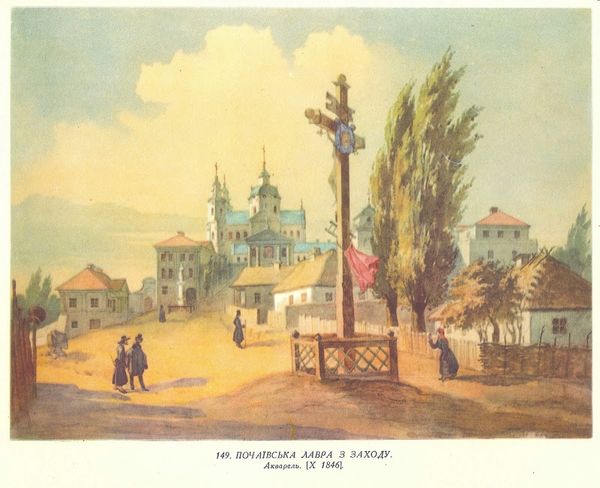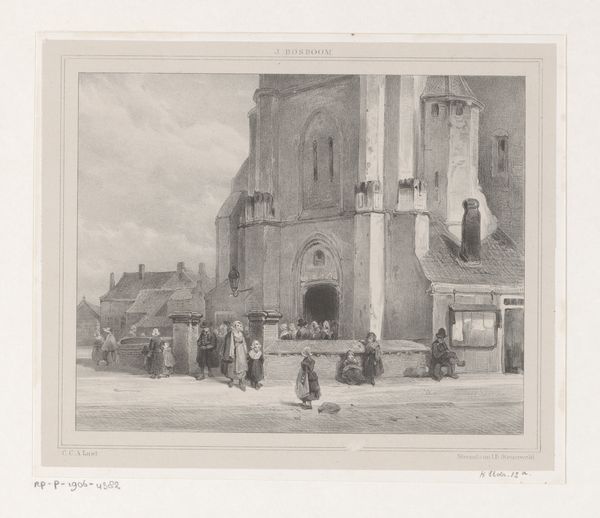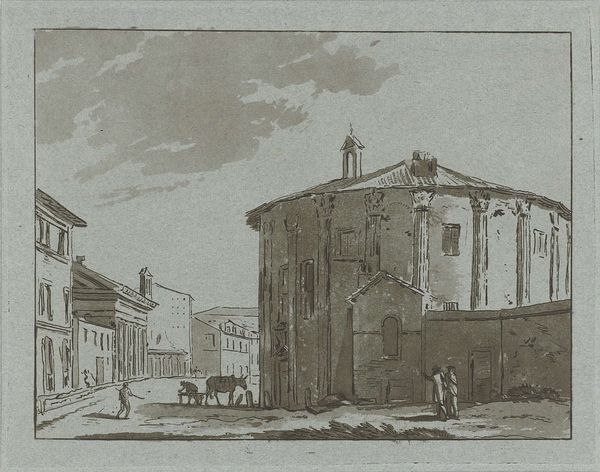
painting, watercolor, architecture
#
medieval
#
painting
#
landscape
#
watercolor
#
romanticism
#
architecture
Copyright: Public domain
Editor: This is "In Pereiaslav. The Church of the Intercession" by Taras Shevchenko, created in 1845, using watercolor. It’s a quiet scene, almost monochromatic, with a palpable sense of stillness despite the presence of people and animals. What strikes me most is the prominent positioning of the church in contrast with the seemingly mundane everyday life unfolding in the foreground. What do you see in this piece? Curator: Beyond the charming surface lies a poignant commentary on the social role of the Church within Ukrainian society during Shevchenko’s time. Notice how the grand architecture looms over the simpler dwellings, a visual metaphor for its authority. Shevchenko often subtly critiqued societal structures. Considering this was painted in 1845, do you see echoes of romantic ideals alongside social commentary? Editor: I do see the romanticism in the picturesque landscape, almost idealized despite its simplicity, but the social commentary hadn't occurred to me immediately. I suppose I was seeing it more as a historical record. How would the socio-political forces of the time have influenced the creation, and even the reception, of a work like this? Curator: Ah, there's the core of it! Imperial Russia exerted considerable control over Ukraine. The Church was both a source of cultural identity and, at times, a tool of political influence. Shevchenko’s depiction might be interpreted as a gentle assertion of Ukrainian heritage against Russification policies. Its reception likely varied depending on the audience – embraced by some as a nostalgic reminder, viewed with suspicion by others as a subtle act of resistance. Can you see the politics of imagery at play here? Editor: Absolutely. The deliberate, careful depiction elevates this beyond just a pretty landscape. The fact that the church is "interceding" suggests a deeper concern for the social welfare of people and their relation to Russian dominance. I hadn’t fully appreciated how loaded this seemingly quiet watercolor could be. Curator: Precisely! It speaks to the power of art as a silent, yet powerful, form of social commentary, reflecting the public role of imagery during that period. Editor: This has totally shifted my perspective; I’m seeing the painting with completely different eyes now. Thank you!
Comments
No comments
Be the first to comment and join the conversation on the ultimate creative platform.
